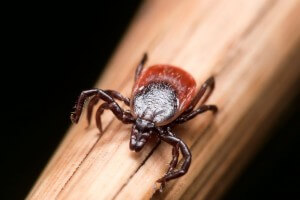As the weather gets cooler, summer pests like mosquitos and wasps begin to disappear and most people think that ticks also disappear along with the risk for disease transmission once there is a frost and the weather turns cooler, but they couldn’t be more wrong. While some species, like American dog tick and Lone Star tick, are not active in fall and winter months. Others, like the deer ticks can remain active in their adult stage from fall to spring as long as the temperature is above freezing.
While mosquitoes and other pests either die or hibernate during the colder months. The adult stage deer tick actually begins its feeding activity about the time of first frost (or early October throughout its range), and it will latch onto any larger host (cat to human) any day that the temperature is near or above freezing. With temperatures often hovering above freezing for most of the winter this means the tick danger rarely goes away. If it’s warm enough to go outside, it’s warm enough for ticks!
Typically, the Lyme disease spirochete infection rate in adult female deer ticks is 40-60% in the eastern and mid-western portion of this tick’s range. So, even in the fall, it is important to check yourself and your pets daily for any attached ticks, and continue to take precautions like using clothing repellents on you and topical products on your pets.
Spraying for ticks early in the spring and late in the summer can help reduce their numbers and keep your family protected year round.

